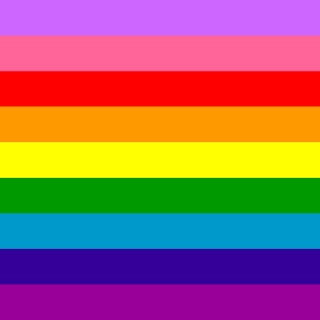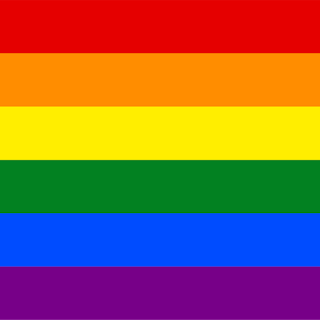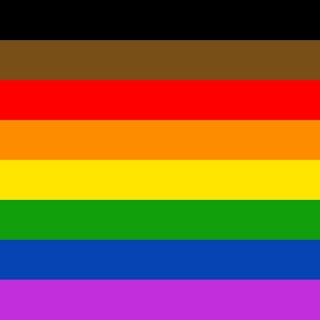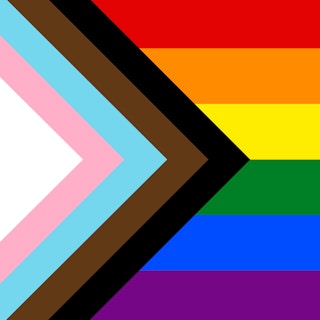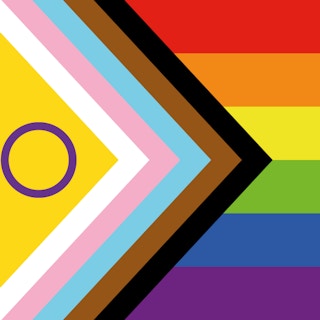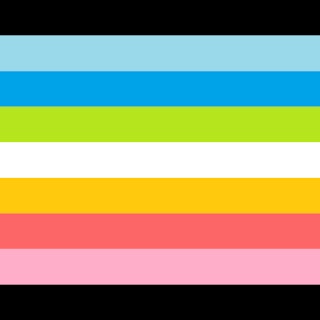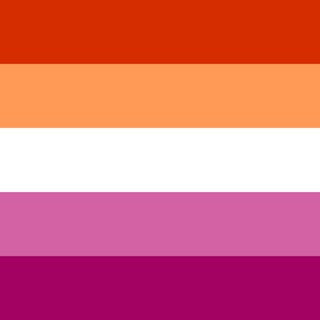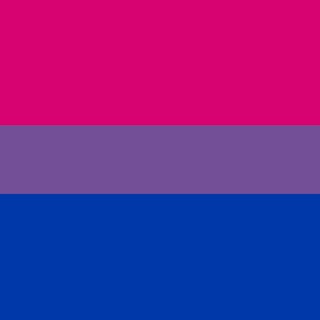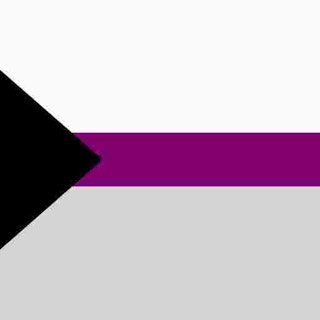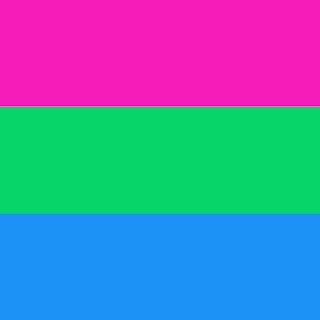
Cookies in use
LGBTQ+ Pride Flags

In the LGBTQ+ community, we signify our pride with flags. With many different identities in the community, there comes many different flags to know. We have collected all of the flags and a guide to learn about all of the different colors of our community’s rainbow. We know that this may not be all of the flags that represent our community, but we will update the page as new flags become popular!
Explore the flag collection below! See a flag's name by hovering or clicking on the flag.
Umbrella Flags
-
Gilbert Baker Pride Flag
-
Traditional Pride Flag
-
Philadelphia Pride Flag
-
Progress Pride Flag
-
Intersex-Inclusive Progress Pride Flag
-
Queer Pride Flag
The original Pride Flag was created in 1978 after activist Harvey Milk asked artist Gilbert Baker to design a symbol of gay pride. Each color represents a different part of the LGBTQ+ community: hot pink represents sex, red symbolizes life, orange stands for healing, yellow equals sunlight, green stands for nature, turquoise symbolizes magic and art, indigo represents serenity, while violet symbolizes the spirit of LGBTQ+ people.
After the assassination of Harvey Milk, the rainbow flag was in high demand. Due to manufacturing issues, the hot pink stripe was removed. The turquoise stripe was removed from the flag as a design choice from Baker. The six color pride flag has represented the community for over 40 years and is still one of the most common LGBTQ+ flags.
The Philadelphia Pride Flag was unveiled at the city’s pride event in 2017. The Philadelphia City Council commissioned the creation of this flag as they wanted to incorporate queer communities of color that have often been overlooked in the mainstream LGBTQ+ movement. The addition of the black and brown stripes symbolize communities of color and their contribution to the movement.
The Progress Pride Flag evolved from the Philadelphia Pride Flag and was created by Daniel Quaser. Quasar added a white, pink, and light blue stripe to represent the Trans community. While the black and brown stripes still represented communities of color, the black stripe is also a nod the thousands of individuals that the community lost during the HIV/AIDS crisis in 1980s and 1990s. Since its creation, the flag has become very popular.
The Intersex-Inclusive Progress Pride Flag adds the intersex community to the Progress Pride Flag. With this update coming in 2021, this serves as the most up-to-date LGBTQ+ flag. The flag was created by Valentino Vecchietti of Intersex Equality Rights UK.
While this flag is not as well known, this is the Queer Pride Flag. Created in 2015, the flag represents all aspects of queerness as the label ‘queer’ has become more celebrated. The pink and blue shades represented same-gender attraction while the orange and green stripes stand for non-binary and gender non-confirming individuals. The black and white stripes symbolize asexual, aromantic, and the agender community.
Sexual Orientation Flags
-
Lesbian Pride Flag
-
Trans-Inclusive Gay Men's Pride Flag
-
Bisexual Pride Flag
-
Pansexual Pride Flag
-
Asexual Pride Flag
-
Demisexual Pride Flag
-
Polyamory Pride Flag
-
Polysexual Pride Flag
While there have been many iterations of the Lesbian Pride Flag, this has been in use since 2018. Since then, it has been widely accepted. The different shades of red, pink, and orange represent the different types of femininity in the lesbian community.
This is the second version of the Gay Men’s Pride Flag. The original only had green, blue and white. This version has different shades of green and blue to include non-cisgender gay men.
The Bisexual Flag was created in 1998 by Michael Page to bring awareness o the bisexual community. The pink represents bisexual’s attraction to the same gender while the blue represents the attraction to the opposite gender. The purple stripe in the middle represents attraction to two genders.
The Pansexual Pride Flag was created around 2010 in order to bring awareness to the community. Pansexual people are those who have the potential for emotional, romantic, or sexual attraction to people of any gender though not necessarily at the same time, in the same way or to the same degree. The pink stripe represents attraction to women while the blue stripe represents attraction to men. The yellow stripe is for everyone else in-between and beyond the gender binary.
The Asexual Pride Flag was created in 2010 following a contest by the Asexual Visibility and Education Network. Asexual individuals are people that do not have a sexual attraction to any gender. Each stripe has a different meaning: black represents asexuality, gray means gray-asexuality & demisexuality, whites stands for non-asexual partners and allies, and the purple represents community.
It is unknown when the Demisexual Pride Flag was created, but it represents people who only form sexual attraction for people once they have established a deep emotional connection with them. Each color has a different meaning: black represents asexuality, gray stands for demisexuality, white means sexuality, while purple represents community.
In 2021, over 30,000 members of the polyamorous community voted for this new Polyamory Pride Flag design by Red Howell, which created a contemporary approach to the traditional vexillological elements of the original flag from 1995, and represents elements around different core values including white for possibility, magenta for desire and love, blue for openness and honesty, gold for energy and perseverance and purple representing the united non-monogamous community.
The Polysexual Pride Flag was created online in 2012 for people that are attracted to multiple, yet not all, gender. The blue stripe represents attraction to men, pink stands for the attraction to women, while green is for attraction to those outside of the binary.
Gender Identity & Gender Expression Flags
-
Transgender Pride Flag
-
Nonbinary Pride Flag
-
Intersex Pride Flag
-
Genderfluid Pride Flag
-
Genderqueer Pride Flag
-
Agender Pride Flag
-
Bigender Pride Flag
-
Demigender Pride Flag
The Transgender Pride Flag debuted at Phoenix Pride in 2000 and was created by US Navy Veteran Monica Helms. She created the flag as a symbol of both the diversity of the trans community and the rights that trans folks are fighting for today. The blue stripes represent the ‘traditional boy’ colors while the pink stripes represent the ‘traditional girl’ colors. The white stripes represents those who are intersex, transitioning, or have an undefined gender. Check out a Tik Tok on the history of the Trans Flag!
The Nonbinary Pride Flag was created in 2014 to represent those individuals who do not identify with either binary gender or within the binary at all. The yellow stripe represents a gender outside of the binary. The white stripe stands for those who have multiple or all genders. The purple stripe symbolizes those who fall between the male/female binary. The black stripe represents those with no gender.
The Intersex Pride Flag was developed in 2013 by the co-chair of Intersex Human Rights Australia, Morgan Carpenter. Intersex people are those born with a variety of differences in their sex traits and reproductive anatomy. There is no one way to be intersex as everyone’s experience in unique. The creator chose yellow and purple as those are seen as gender neutral colors.
The Genderfluid Pride Flag was developed in 2013 by JJ Poole to give space to those whose gender identity and/or gender expression fluctuates during different times and different circumstances. Each color represents a different aspect of the Genderfluid community: pink stands for femininity, while blue stands for masculinity, white represents the lack of gender while black symbolizes all genders, the purple stripe represents a combination of masculinity and femininity.
The Genderqueer Pride Flag was created by Marilyn Roxie in 2011 to represent those people that reject the static categories of gender. Genderqueer people may see themselves as both or neither male and female or beyond the binary. The lavender stripe represents androgyny and other queer identities while the white stripe stands for agender people. The green stripe symbolizes those who fall outside of the binary.
The Agender Pride Flag was created in 2014 to represent those who have an unidentifiable gender, are gender neutral, or have no gender. The black and white stripes represent the absence of gender while the gray stripes stand for semi-genderless people. The green stripe represents non-binary people.
The creation of the Bigender Pride Flag is unknown. The flag represents those who have two genders. In some cases, this is both male and female, but it can also include non-binary identities. These two gender identities can occur at the same time or they can vary over time.
The details around the creation of the Demigender Pride Flag are unknown. The flag represents those people who have a partial feeling, but not a full connection, to a particular gender identity or to the concept of gender.
Intersectionality Pride Flags
-
Pride of Africa Flag
-
Queer People of Color Pride Flag
-
Two-Spirit Pride Flag
The Pride of Africa debuted at Johannesburg Pride in 2019. It was created by Pride of Africa Foundation. This is the first pan-African LGBTQ+ flag. It is inspired by the flags of all the countries in Africa.
The Queer People of Color Flag appeared at San Francisco Pride in 2019, but rose to prominence in 2020 during the Black Lives Matter Protests. While the designer and original year are unknown, the flag signifies how the struggle for racial equality and queer equality often intersect. It also honors the number of QPOC that have spent their lives fighting for both queer and racial equity.
The Two-Spirit Pride Flag represents Indigenous American that identity as two-spirit individuals meaning they fall outside of the M-F binary. The feathers represent masculine and feminine identities. The circle signifies the unification of both identities into a separate gender while the rainbow represents modern queer identities.
- Topics:
- Allies
- Bisexual
- LGBTQ+ Youth
- Coming Out
- Transgender
Love conquers hate.
Image:
